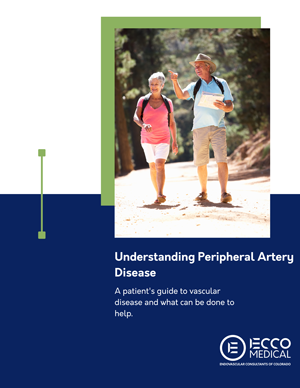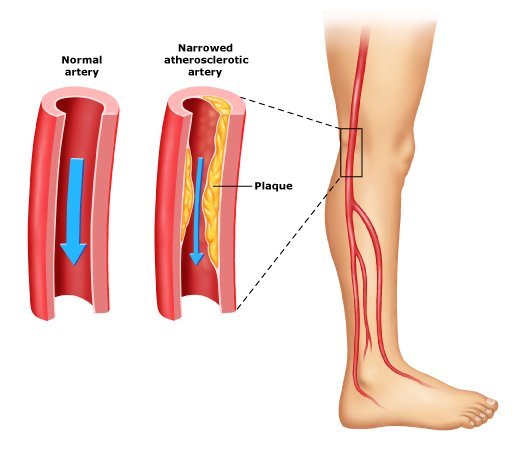Peripheral Arterial Disease occurs when plaque, made of cholesterol and/or calcium, builds up in the arteries supplying blood to your extremities, narrowing them and reducing the flow of blood. This process is known as atherosclerosis, or “hardening of the arteries.”
PAD is a serious condition that affects one in every 20 Americans and should be diagnosed promptly by vascular specialists so they can reduce your risk as quickly as possible.
In advanced cases of PAD, more extensive treatment might be necessary to keep the disease from progressing further.



Hours
Mon. to Fri. 8:00 am to 5pm
Lone Tree, CO
8080 Park Meadows Drive, Suite 150
Lone Tree, CO 80124
(720) 668-8818
Pueblo, CO
323 S. Purcell Blvd. #150
Pueblo, CO 81007
(Please use the side entrance)
(719) 569-3226
Fax: (877) 229-5440
Email: info@eccomedical.com